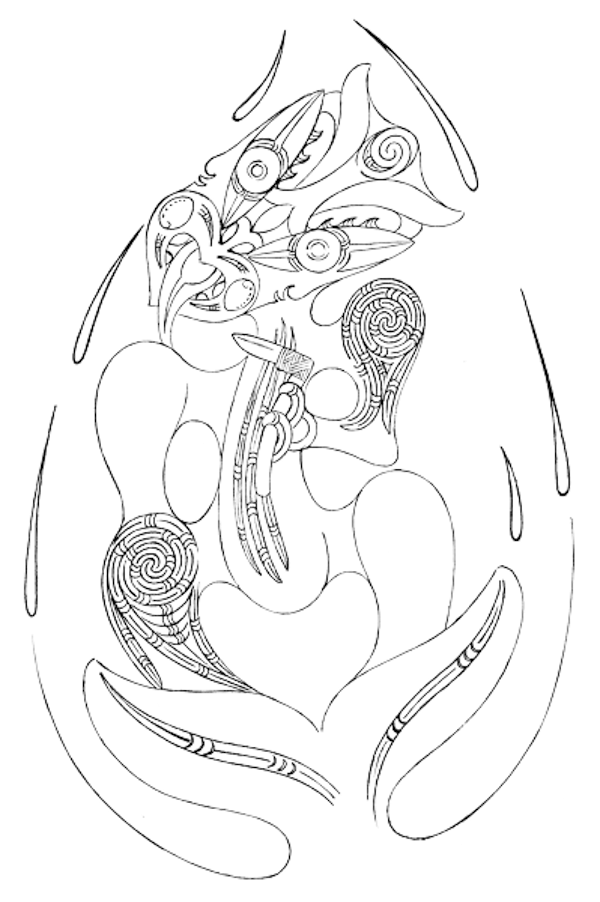
Tangaroa: Atua of the sea with qualities including rhythmic, tidal surging, calm.
In the week before Lock-down, Environment Southland’s Megan Bates and Craig Smith, visited Aparima College to guide us through our Bronze Enviroschools reflection. Our visitors were introduced to the whole school in Assembly and then went through to the Library to meet with the EnviroCouncil students, staff and community members.
Megan and Craig were welcomed with a mihi whakatau from students in our Te Reo Māori class, and the community members who have been so helpful to us were acknowledged for their time and generosity. We have been working on a number of projects for the past three years, but only registered as an Enviroschool last August. Using a ‘Big Picture’ poster of a birds-eye view of the school to guide discussion, students and staff took turns to summarise the environmental projects that they have been most involved in.
Celebrating five main projects:
- The Tree Project, where an area of scrub and felled Macrocarpa has been shaped and replanted with heritage fruit trees and native trees. The major planting event was done through a Treemendous Makeover in August 2019 and, since then, we have planted and tended to 700 trees and shrubs. We have constructed a Wellbeing Walkway through the Tree Area, which also follows the path of the Te Araroa walkway. During Term 1 our Year 10 students worked with two Creatives to produce poetry and sculpture for the walkway with a focus on linking ourselves with the land.
- The School Gardens were revived from a defunct Horticulture plot. Students have built a number of raised garden beds and a compost area and constructed a tunnel-house purchased with the prize money from an Environment Southland community award that we won last October. We have grown a range of vegetables including new potatoes, garlic, beans, peas, tomatoes, basil, rhubarb, parsley, chives, mint and sunflowers. We have exchanged some of these plants for seeds via the Environment Centre and have collected some of our own seeds. We also used some of the vegetables to make soup for hungry students last Winter.
- Waste management. Litter and lack of recycling has been an issue at our school. We hoped to put better waste management systems into place. We started with Compost Buckets in the staffroom and several classrooms, in which students threw waste food which was composted in the School Gardens. We also started thinking about how we could effectively recycle plastic bottles. We joined the Sustainable Coastlines Litter Intelligence Programme and completed litter surveys on three of the beaches near School. As a whole school, we participated in the Big Clean-Up last September, collecting and sorting over 40kg of rubbish from around the school grounds. In classes, we used recyclable items for Art and Christmas crafts.
- We formed the EnviroCouncil as a representative group of Year 7-13 students who are passionate about our environment. We meet every Friday after lunch in the Library to share ideas and plan activities.
- Field Trips. We visited the Whakaoraka nurseries at Takutai o Te Tītī Marae to start learning about Mātauranga Māori. We also toured the Guyton’s Food Forest in Riverton and sent representatives to the Sustainability Roadshow around Southland and the Murihiku Coastal Treasures Conference. See story here.
Aligning to the Bronze descriptive paragraph:
Following this discussion, we took Megan and Craig for a tour of the projects and answered any further questions. Back in the classroom, Megan guided the students through the process of reflecting on the Bronze statement and the extent to which we felt that we had met the criteria for the Guiding Principles and Four Key Areas. In small groups we discussed how our projects fitted in with these criteria. We decided that our school could identify with the Bronze paragraph in that we are getting to know our environment and creating a whole school vision. We are also exploring how we can take sustainable action, with the Principles and Areas to help give us ideas and guidance. There has already been positive change for the better and our community know that we are an Enviroschool as we have involved them in our projects and have reported progress via social media, Assemblies and print media. About 50% of our staff and 25% of our students have chosen to be actively involved and others have been participated in whole-school events.
Next steps:
To continue our journey towards Silver, we know that we want to maintain caring for the Tree Project and the School Gardens, and to take further action on improving our waste systems, particularly through more structured recycling of plastics. We have applied for a grant from the Keep NZ Beautiful Litter Less programme and have registered for the Young Reporters for the Environment competition. We hope to use Electives time to progress with regular LitterIntelligence beach surveys on three local beaches. We have also started planning towards creating an Energy Shed in our school grounds, where we can create and investigate different forms of energy. Our Bronze reflection showed us that we need to reach out to more of our students and to make our enviro activities relevant and fun, and that we also need to create space to hear the many culturally diverse voices present in our school and community. Particularly we hope to learn more about Mahika Kai and Mātauranga Māori. We also want to continue to care for the needs of our community, for example, by continuing the Soup-Kitchen using vegetables from the garden and local suppliers. We know we have a lot to learn and we are looking forward to reaching out to experts to share their knowledge and skills with us.
For an article in the Southland Express see here.
